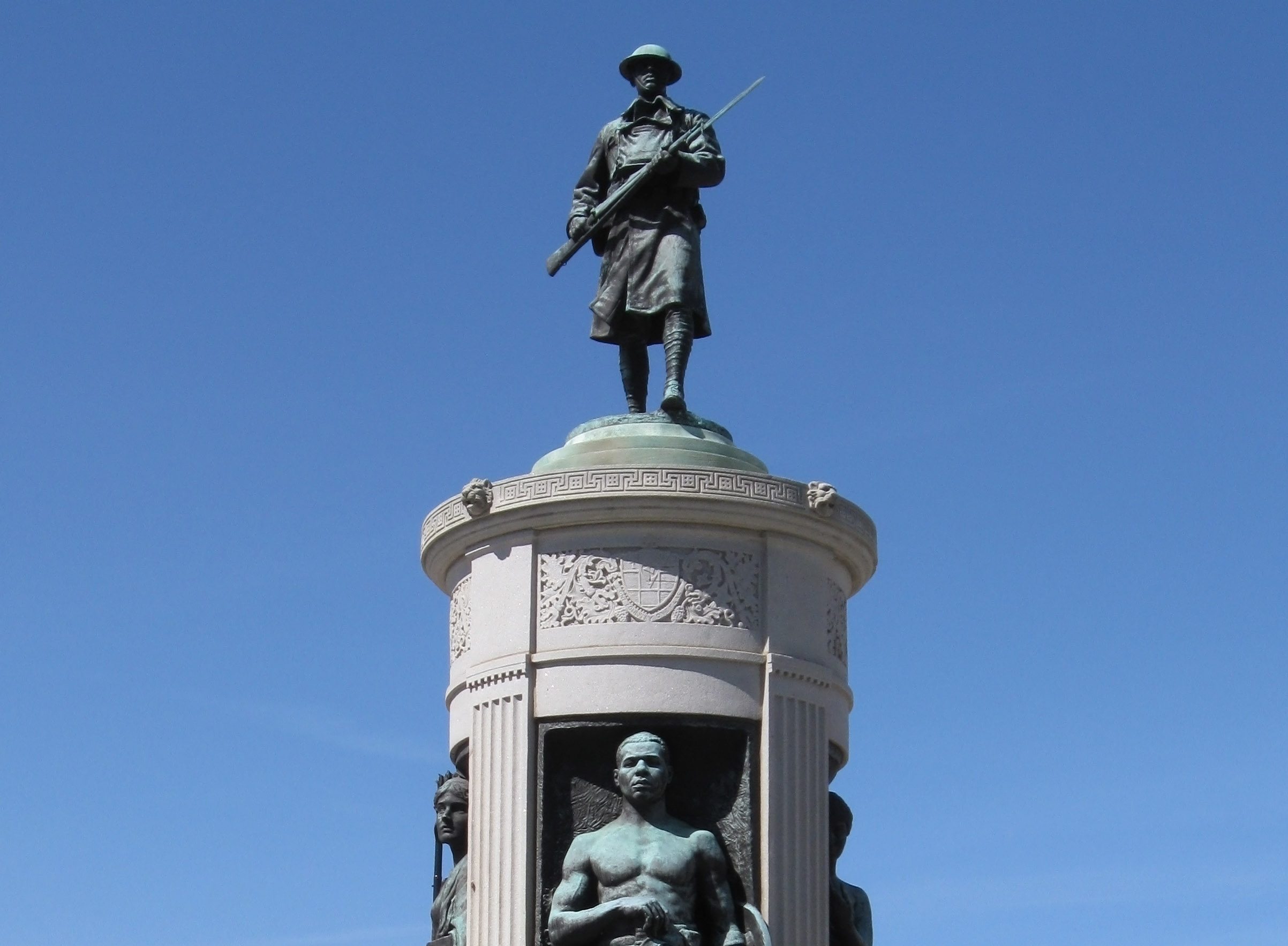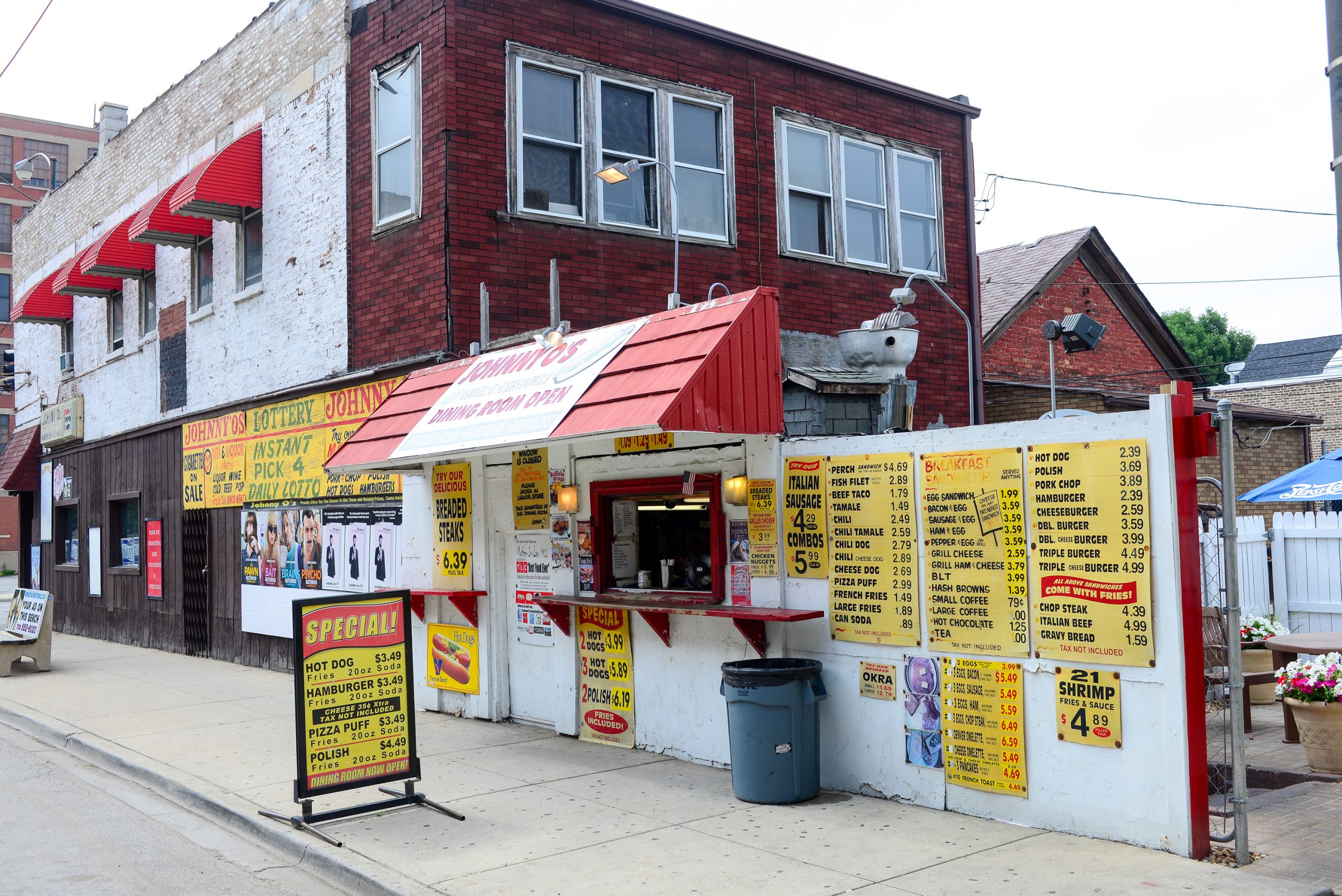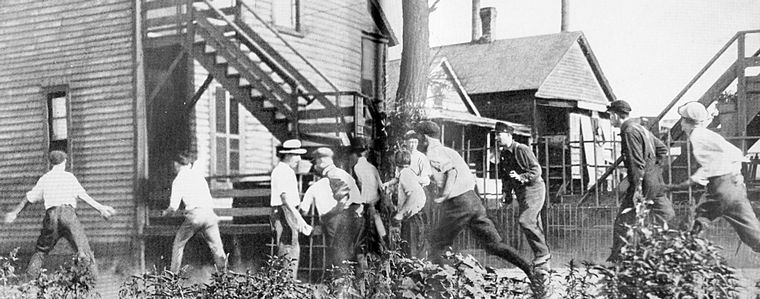Halsted Street shoots straight through the heart of Chicago, running north from the southern border until it merges with Broadway in Lakeview. Along that route, it covers a vast diversity of neighborhoods. With a recent Halsted Street documentary by VICE, I realized that there are now three different documentaries, made over the past century, which have seized upon the insights provided by this thoroughfare. Each film travels up and down Halsted Street, documenting the route and its residents. Being a film studies instructor, I wanted to explore what these films share and what makes each unique.
We research stories from Chicago history, architecture and culture like this while developing our live virtual tours, in-person private tours, and custom content for corporate events. You can join us to experience Chicago’s stories in-person or online. We can also create custom tours and original content about this Chicago topic and countless others.

Filming Halsted Street for Social Change
The first Halsted Street documentary dates to 1932. It was directed by Conrad Friberg, a Chicago local who was active in the labor movement. The film was produced in conjunction with the Workers Film and Photo League, a group of filmmakers dedicated to advancing social change through their work. Simply titled Halsted Street, the 15-minute black and white documentary progresses up the entire length of Halsted. The camera travels from the city’s southern border at 127th Street to its northern terminus. Friberg’s aim was to show the living conditions in working class neighborhoods along Halsted. Unfortunately, this film is not available to the public so I can’t share a link for you here. The few copies that survive are held by institutions like the Museum of Modern Art in New York.
A Long-Gone Chicago
I got a chance to see this short while I was a graduate student at the University of Chicago. A few things about it stand out clearly in my memory. First, just like today, the class divisions between neighborhoods in Chicago were very strong in 1932. Most of the film moves through South and West Side neighborhoods. These were working class areas then and remain so now. The film ends around the tony mansions of Lincoln Park and Lakeview. It’s astounding to see the gulf in wealth between neighborhoods so close together.
I also recall marveling that Halsted Street allowed me a rare glimpse at some vanished neighborhoods. The teeming streets of the old Maxwell Street market and slum are stark in my memory of the film. That neighborhood on the Near West Side was once considered one of the poorest and most densely packed areas on earth. The images of it from 1932 reminded me of contemporary cities with massive slums, like Mumbai and Rio de Janeiro. I often wish I could trot the film out for guests on our custom private tours.
Studs Terkel and Halsted Street USA
The second documentary, Halsted Street USA, was written, directed, produced, and edited by David E. Simpson in 1994. Studs Terkel, one of our favorite historians over here at Chicago Detours, was narrator. Simpson had seen the original Halsted Street documentary as a student at the Art Institute in the 80’s. He decided to recreate the project with a larger scope in a later age. Terkel lends his iconic voice to the opening and closing narration of the movie. What makes this film interesting is that we hear directly from the people along Halsted. The filmmaker never appears on screen himself, which makes it feel like the people on camera are speaking directly to the audience about their lives and experiences. It lends the film a bracingly honest quality.
Halsted Street USA begins beyond Chicago, at the bottom edge of Illinois where Illinois Route 1 jumps out of an Ohio River ferry landing. That spot, within shouting distance of Kentucky and the South, is the origin point of what Chicagoans call Halsted Street. Amazingly, it runs without interruption from the Ohio River all the way up to Chicago. The film winds through the hundreds of miles of farms and small town in downstate Illinois before reaching Halsted Street proper at Chicago’s southern edge.
Seeing the Recent Past
The documentary’s presentation of the city in 1994 feels both familiar and a little alien. It looks a lot like the city I know now, but signs of continuity from the first film are present. Neighborhoods are walled off by race and class, just like in the 1930’s. The contrast between the haves and the have-nots is still terribly stark. Nowhere is this more obvious than the transition from Cabrini-Green to Lincoln Park.
The infamous public housing projects on the Near North Side still loomed over Halsted Street in 1994. It was shocking and depressing to see just how much official neglect and internecine gang warfare has degraded life for Cabrini-Green’s residents. Yet two blocks north, Halsted Street goes underneath the Brown Line tracks and enters Lincoln Park. That neighborhood’s white yuppie residents (which includes your author these days) seem to live in a wholly different dimension than the residents of Cabrini-Green. The two biggest issues raised by interviewees there are parking scarcity and cigar quality. It’s a head-spinning transition.
VICE Brings Halsted Street into the Viral Age
VICE Media produced the most recent documentary about Halsted Street. They specialize in news and cultural content that veers outside the confines of traditional mass media. VICE has a print magazine, but mainly relies upon online distribution of its work through websites, social media, and YouTube. It is a company that feeds into and thrives upon the viral world of online content.
A hipster-esqe reporter is our host, as one might expect from Vice. He’s an energetic and agreeable guide in the film. His questions rarely get beyond surface-level interactions, but that might be because of the short 22-minute runtime.
The overall film is entertaining to watch, though it borrows heavily from the sardonic gusto of Anthony Bourdain’s TV shows. Its depiction of contemporary Chicago is honest and accurate. Tellingly, those same racial and class boundaries persist. We can see some tempered progress. Bridgeview residents now welcome visitors, rather than exclude them. Indeed, they welcome our Big Shoulder Historic Bar Tour, an unlikely prospect in the past. Luxury high rises have replaced the resilient community at Cabrini-Green. Chicago remains a city of neighborhoods, certainly. But those neighborhoods show the clear distinction between the haves and the have-nots from the 1930’s to the present.
All three of these films about Halsted Street provide valuable insights into Chicago. We can know ourselves better through theses glimpses of our past and present along that one stretch of concrete.
–Alex Bean, Chicago Detours Tour Guide
ABOUT CHICAGO DETOURS
Chicago Detours is a boutique tour company passionate about connecting people to places and each other through the power of storytelling. We bring curious people to explore, learn and interact with Chicago’s history, architecture and culture through in-person private group tours, content production, and virtual tours.

















